Fresh strawberries picked in June are the best things in the world. The berries smell sweet, and the sun-warmed berries taste so juicy and good.
Strawberries are an easy little fruit to grow, and it’s just as easy to increase pollination, improve the soil, and reduce insect pests for your strawberries.
This isn’t done through spraying or chemicals. It’s done by increasing biodiversity in the strawberry patch through companion planting.
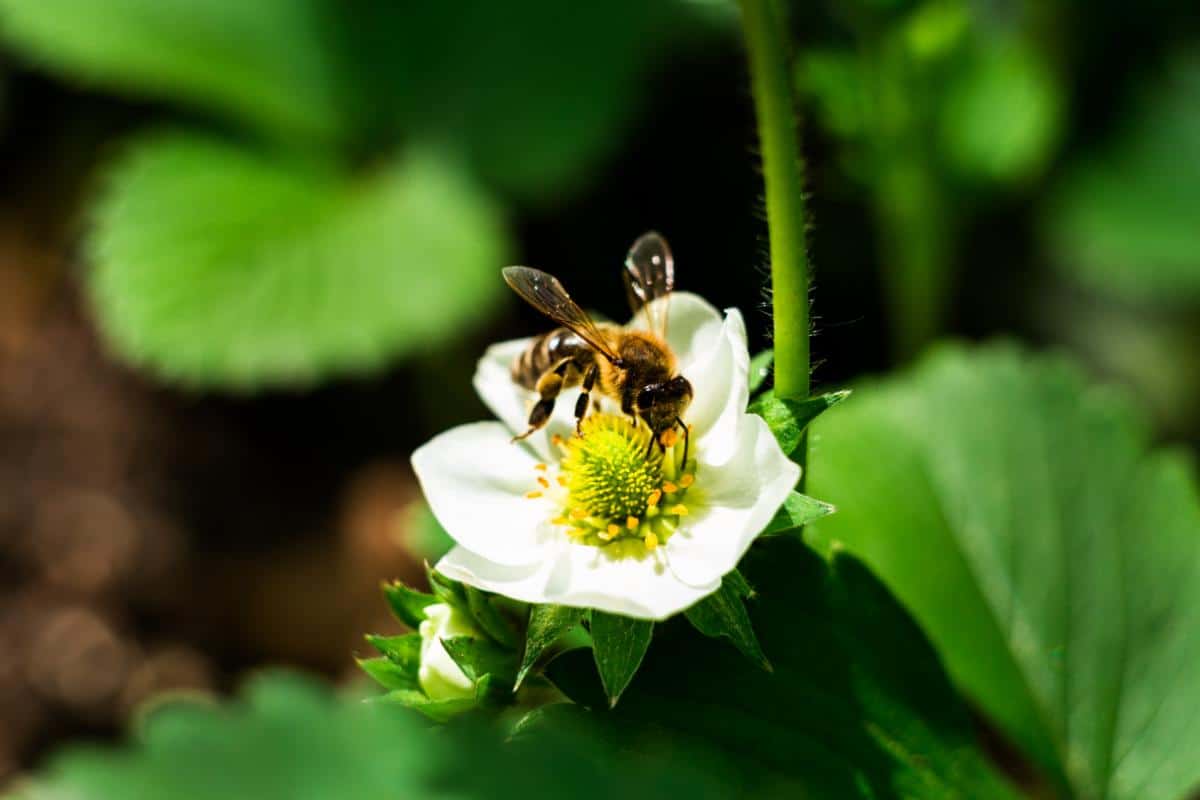
Companion planting is based on the idea that planting different species together can create beneficial or even synergistic results for both. Different research shows that the right companion plants in the strawberry patch will attract pollinators, deter pests, bring in beneficial insects, and make strawberries grow better. The best companion plants even improve strawberry yields.
There are also plants to avoid in the strawberry patch. This article will cover both.
Jump to:
- Why Use Companion Plants for Strawberries?
- Why Are Pollinators So Important to Strawberries?
- 11 Best Companion Plants for Strawberries
- Vegetables
- Alliums
- Spinach
- Peas
- Rhubarb
- Flowers
- Sweet Alyssum
- Lupines
- Marigolds
- Herbs
- Chamomile
- Calendula
- Borage
- Chives
- The 4 Worst Companion Plants for Strawberries!
- Brassicas/Cole Crops
- Tomatoes
- Melons
- Potatoes
- Conclusion
Why Use Companion Plants for Strawberries?
Adding flowering plants and other plants next to and among the strawberries sounds like it would lower yields, but the opposite is actually true.
After all, plants in the wild share their space with a hodgepodge of other plants – and create a community where they support each other. This also goes for strawberries.
Strawberry flowers don’t provide much nectar to bring in pollinators or beneficial insects. The nectar-rich flowers in the article will help with that.
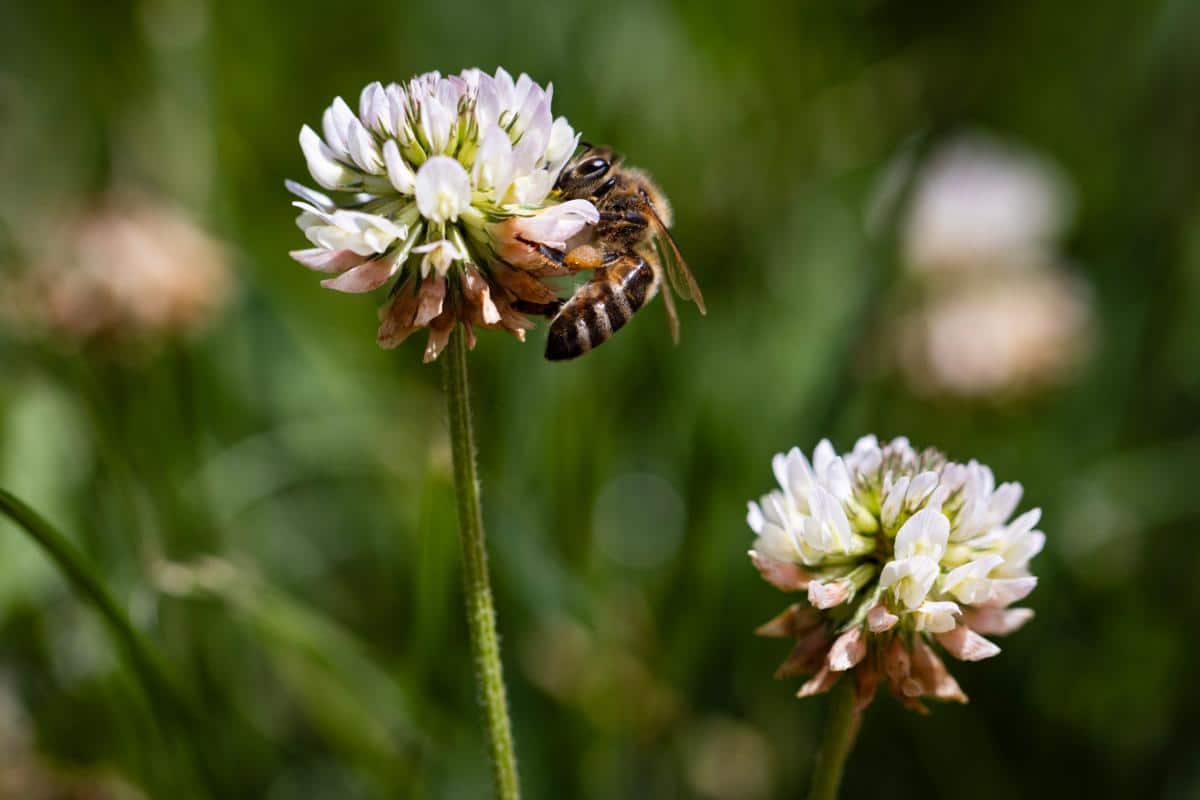
Growing a mix of different plants in the vegetable garden provides these ecological benefits:
- Plants become more adept at fighting off pests, insects, and diseases.
- Companion planting gives beneficial insects more places to live.
- Flowers provide insects with pollen and nectar to eat.
- Other plants provide hiding places for insects.
- Companion plants improve pollination, create a healthy ecosystem, and increase beneficial insects while decreasing garden pests. And it makes your garden prettier.
Why Are Pollinators So Important to Strawberries?
Most flowers have one ovary that needs to be pollinated to form a seed. Strawberries are overachievers … their flowers have up to 500. On the full-grown fruit, these are the strawberry “seeds” – biologists call them achemes.
Every single acheme must be pollinated for the berry to fully ripen. Strawberry flowers can (and do) pollinate themselves, but pollinator insects do a much better job, getting up to 91% of the achemes pollinated.
The seedy green nubbins on a ripe strawberry are the unpollinated achemes. Companion plants that lure in pollinators will fix that.
Improving Pollination in the Strawberry Patch
A study published by the Royal Entomological Society states that “companion plants were found to significantly increase both yield and market quality of strawberries” due to increased pollination of the flowers. These strawberry plants produced 35% more fruits, and the berries were larger, prettier, and tasted better.
More Beneficial Insects = Fewer Strawberry Pests!
Many insects, arthropods, and other invertebrates (including snails and slugs) feed on strawberries. Add the right companion plants around your strawberry patch to attract beneficial insects that will pounce on annoying pests and eat them for lunch.
11 Best Companion Plants for Strawberries
Vegetables
Alliums
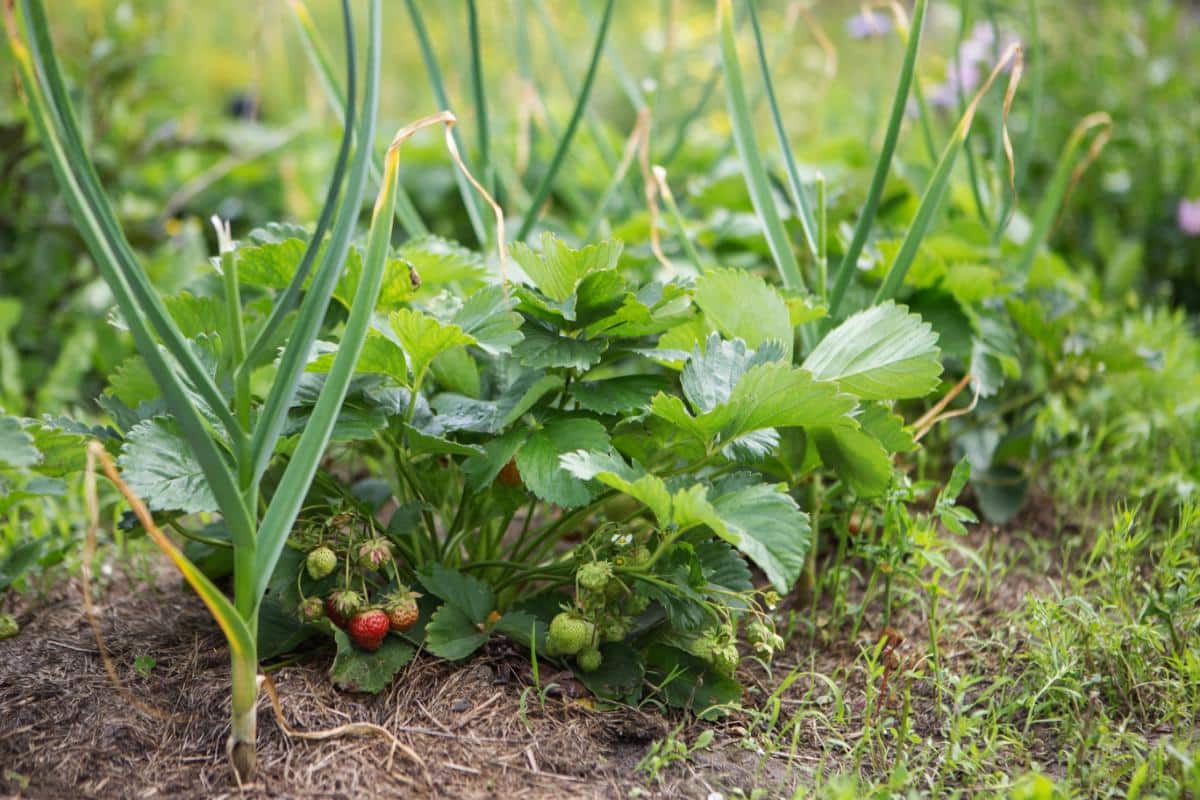
| Plant Name: | Garlic, Onions, Chives, etc. |
| Benefits: | Repels insect pests, improves soil health |
Plants in the Allium family rely on pungent odors to make life bad for insect pests. When garlic is planted between rows of strawberries, the number of spider mites on strawberry plants is reduced by up to 52%. Alliums also seem to annoy aphids.
What’s more, when garlic was interplanted, populations of useful soil organisms such as bacteria and soil fungus increased – this is good for strawberry roots.
Garlic and onions are best planted in early spring. Get onion sets, i.e. bundles of baby onions, at your local nurseries. They’re some of the first plants to go into the ground.
Spinach
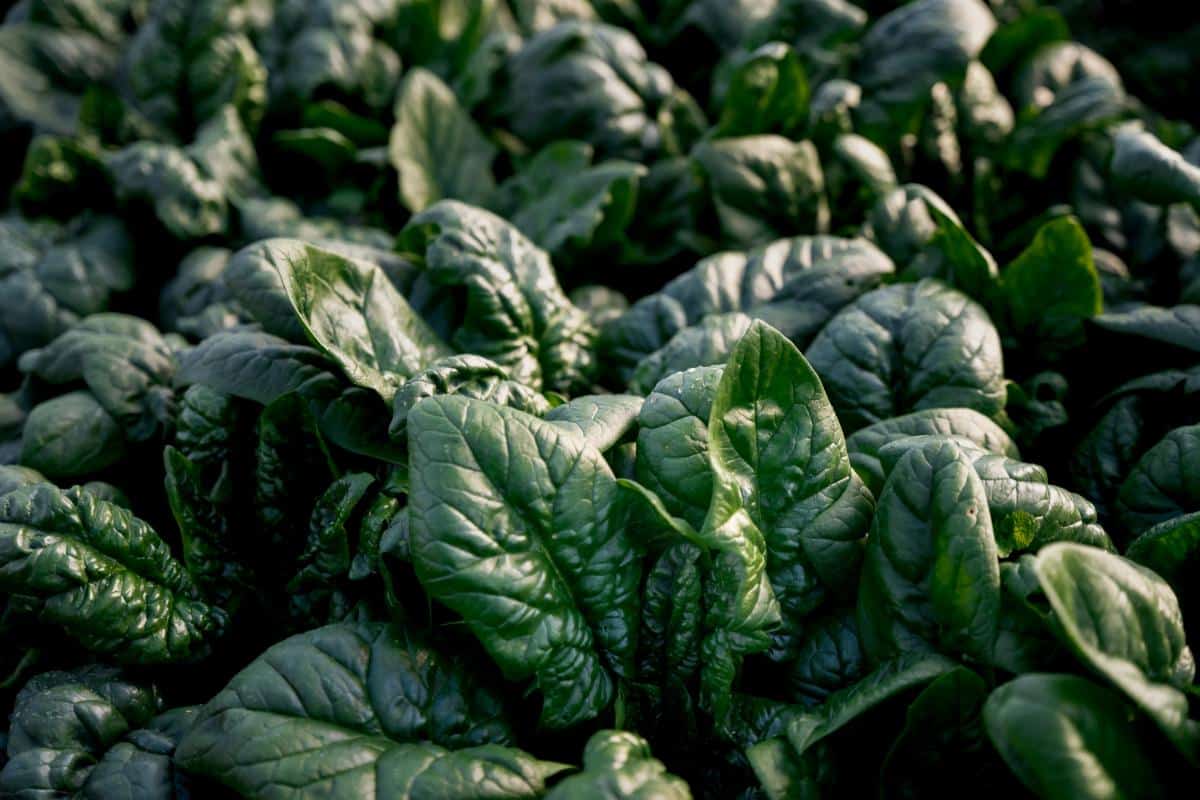
| Plant Name: | Spinach |
| Benefits: | Provides shade (and gets shaded) |
This leafy vegetable is a friend of strawberry plants. Both plants help the others to grow. Spinach is shaded by the strawberry plants, and when strawberries brow up and shade the roots of the spinach plant when the weather warms up and keep it from bolting as quickly.
Spinach is an early spring plant. Sow the seeds in a warm, sunny location. Water to keep the soil from drying out until the seedlings are an inch or two tall.
Peas
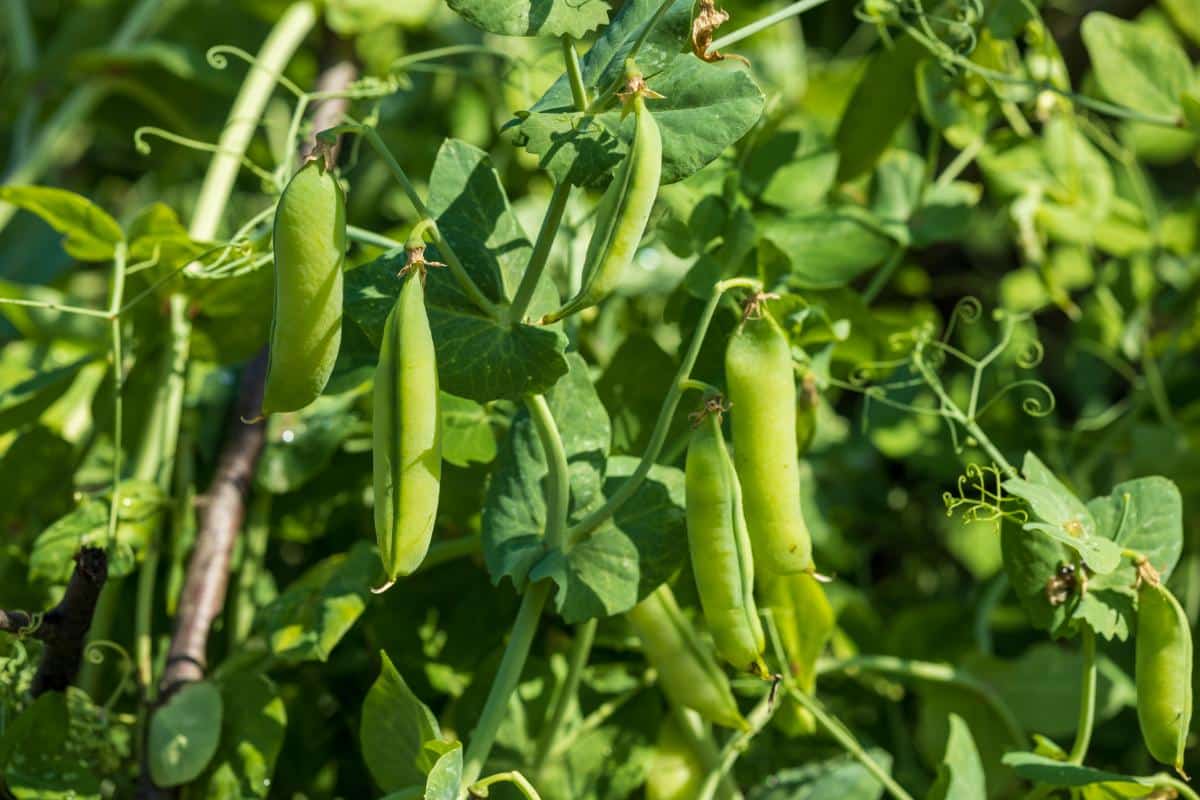
| Plant Name: | Peas |
| Benefits: | Adds nitrogen to the soil and enriches it |
Early peas planted near the strawberry patch boost soil quality by fixing nitrogen in the soil. The early peas will be finished about the time the strawberries bear fruit, so you can pull up the finished peas, but the soil-building qualities of its roots will remain.
Peas are sown through the early spring. Sow a row or partial row every week to stagger harvest times. This will provide a steady harvest of peas over a longer period of time.
Rhubarb
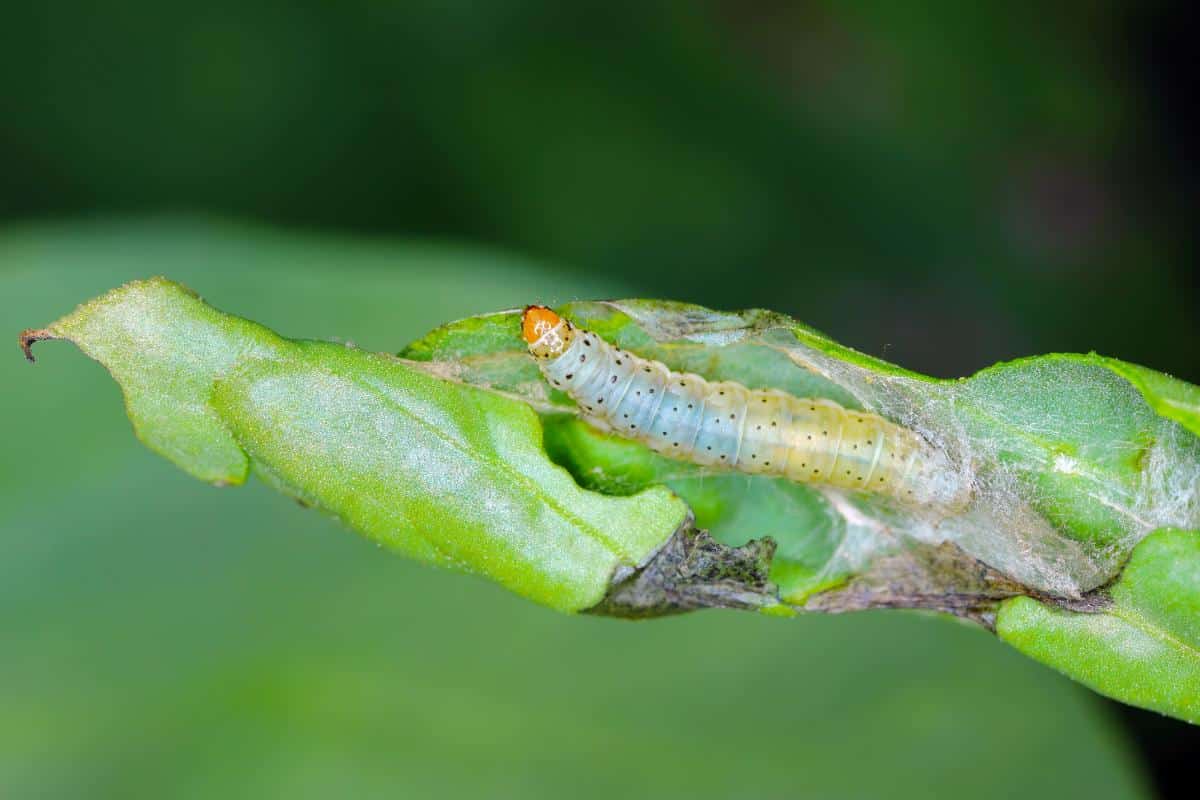
| Plant Name: | Rhubarb |
| Benefits: | They share the soil |
Rhubarb has long been a friend of strawberries in pies, but they can also be helpful to strawberries in the garden.
They’re also good to have handy if you want to cut a few stems to make a nice pie.
Rhubarb is a perennial plant, so it will come back year after year, just like your strawberries. Plant it on the north side of the patch so its broad leaves don’t shade out the plants. Eat only the stems – never the leaves.
Learn more about companion planting: 15 Best Companion Plants for Cucumbers
Flowers
Sweet Alyssum
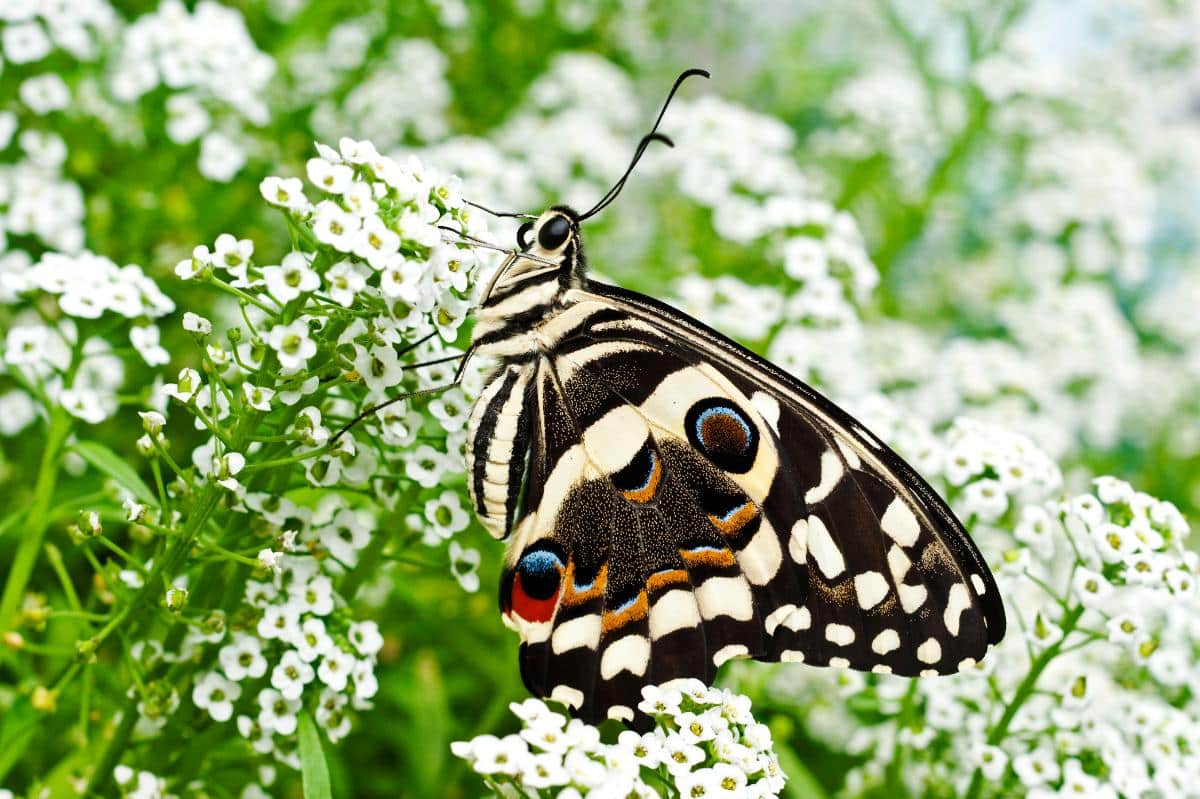
| Plant Name: | Sweet Alyssum |
| Light: | Full sun to partial |
| Size: | 6 to 12” wide |
| Zone: | 5 to 11 |
| Benefits: | Attracts pollinators and beneficial insects |
This popular annual with its fragrant white, purple, or pink flowers was one that we always planted in the garden as being friendly to pollinators. It bears lots of flowers filled with sweet nectar that insects enjoy – including the green lacewing (Chrysoperla). Lacewing larvae are voracious eaters on strawberry plants, targeting small insects such as aphids.
Sweet alyssum plants look lovely when they edge the strawberry patch but can also be used to fill bare patches in the strawberry bed.
Sweet alyssum can be started from seeds in the garden or planted as starts recently bought from a local nursery.
Lupines

| Plant Name: | Lupines |
| Light: | Full sun |
| Zone: | 3 to 8 |
| Benefits: | Fixes nitrogen in the soil, attracts pollinators |
This flowering plant, also a member of the pea family, will fix nitrogen in the soil while attracting pollinators to your garden. The blossoms are gorgeous as well. Lupines can be directly sown in the garden, or you can buy baby plants at the local nursery.
Side note: lupines prefer cool weather and cool climates, so grow them as an annual in hot climate.
Marigolds
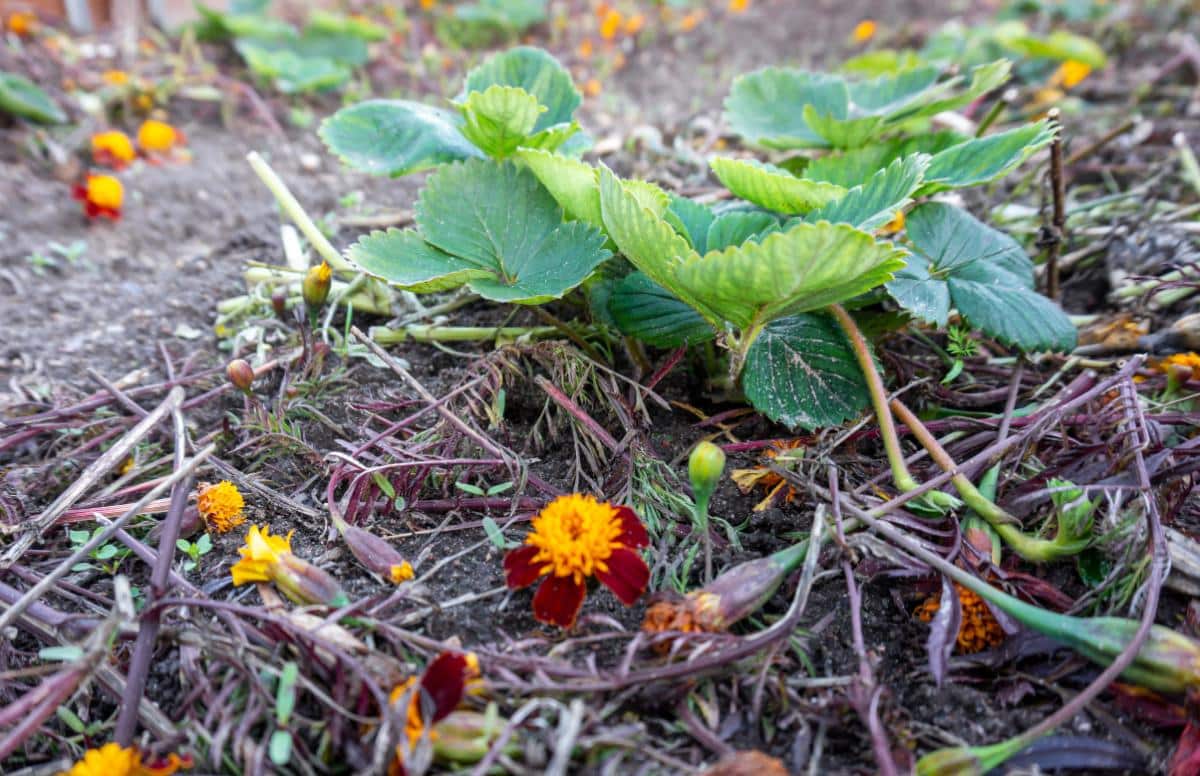
| Plant Name: | Marigolds |
| Light: | Full sun |
| Zone: | 2 to 11 |
| Benefits: | Attracts pollinators, traps pest nematodes |
These bright orange or yellow flowers attract pollinators, but marigolds can also act as trap plants for root-knot nematodes. These nematodes are tiny white roundworms, almost microscopic, and this particular variety attacks strawberry roots. Plants damaged by root-knot nematodes will flower and fruit poorly, are badly affected by drought, are slow growing, and don’t live long.
Getting root-knot nematodes out of the soil means acting before the strawberries are planted. Planted as a cover crop in the area where you plan to plant your strawberries.
If you pull up a marigold and find knotty little nodules on the roots, that means these pesky nematodes have taken up residence there – in effect, crawling out of the soil into your marigold roots, where they eventually die. After growing marigolds in an area for three or four months, the nematodes are out of your soil – for a while, anyway.
The upper parts of the marigold can be chopped up and scattered across the strawberry bed as an aromatic mulch that repels pest insects.
Herbs
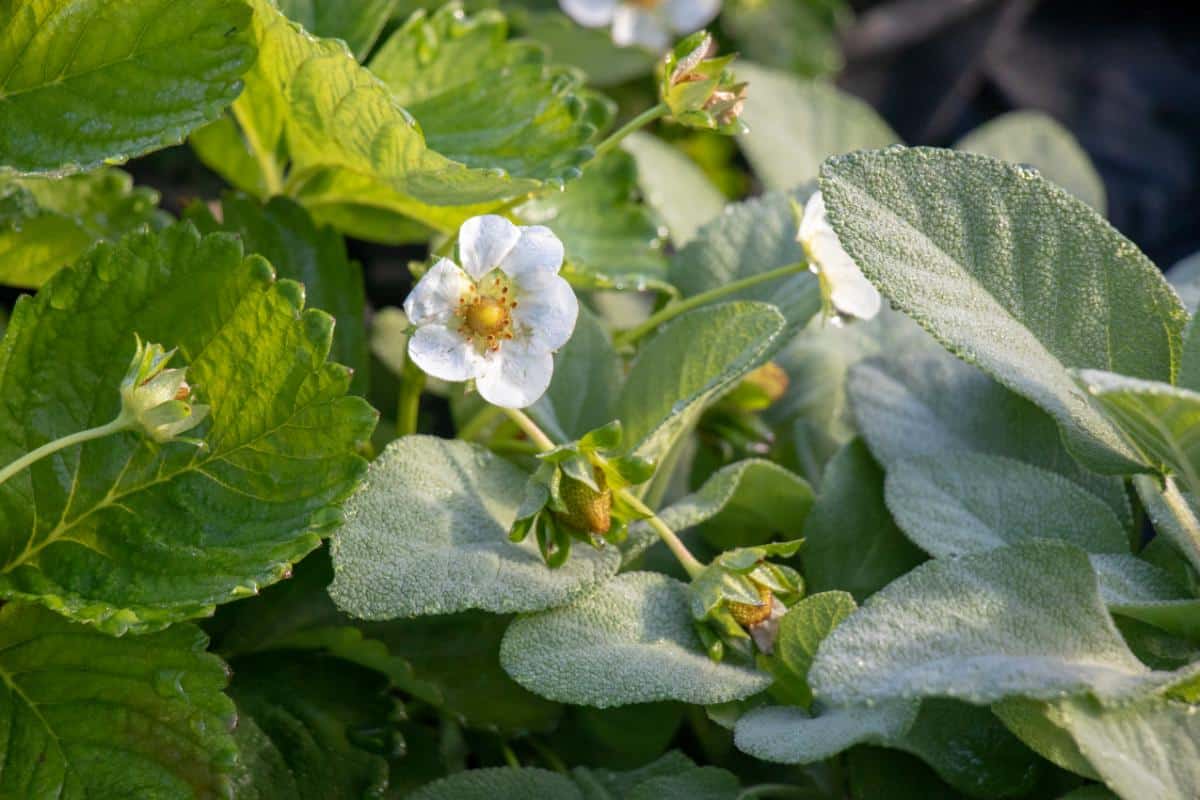
Chamomile
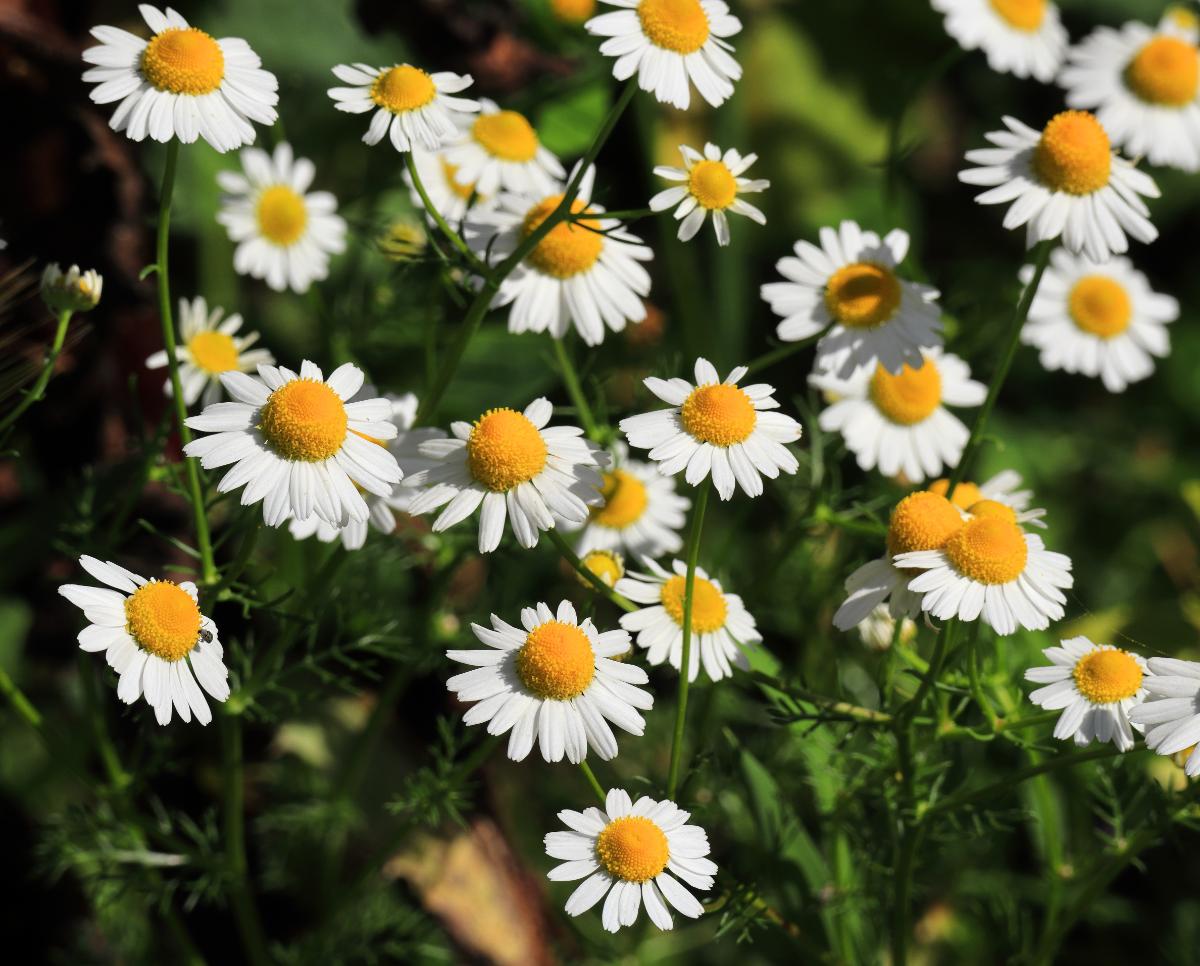
| Plant Name: | Chamomile |
| Light: | Full to partial |
| Zone: | 4 to 9 |
| Benefits: | Improves the flavor and aroma of strawberries; attracts pollinators |
Chamomile blooms at the same time your strawberries are ripening, attracting both pollinators, hoverflies, and parasitic wasps that lay eggs inside insect pests. And you can gather the flower heads and make chamomile tea, just like Peter Rabbit’s mother did in the Beatrix Potter story.
Calendula
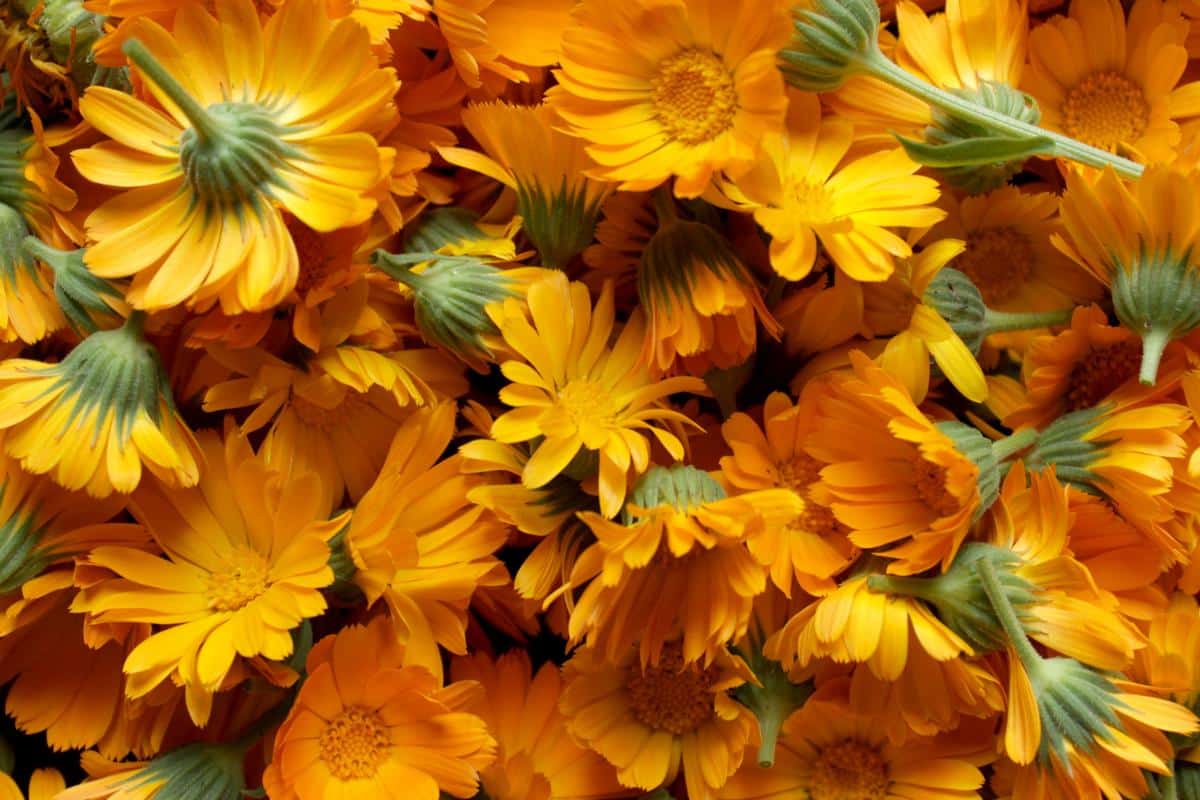
| Plant Name: | Calendula |
| Light: | Full to partial |
| Zone: | Perennial in zones 9-11; used as annual in zones 2 to 11 |
| Benefits: | Edible; attracts pollinators |
These cheerful yellow daisy-like flowers are great at attracting new pollinators, with the extra benefit of being handy any time you need some edible flowers to dress up your salad. These can be directly sown into the garden after frost or planted directly.
Borage
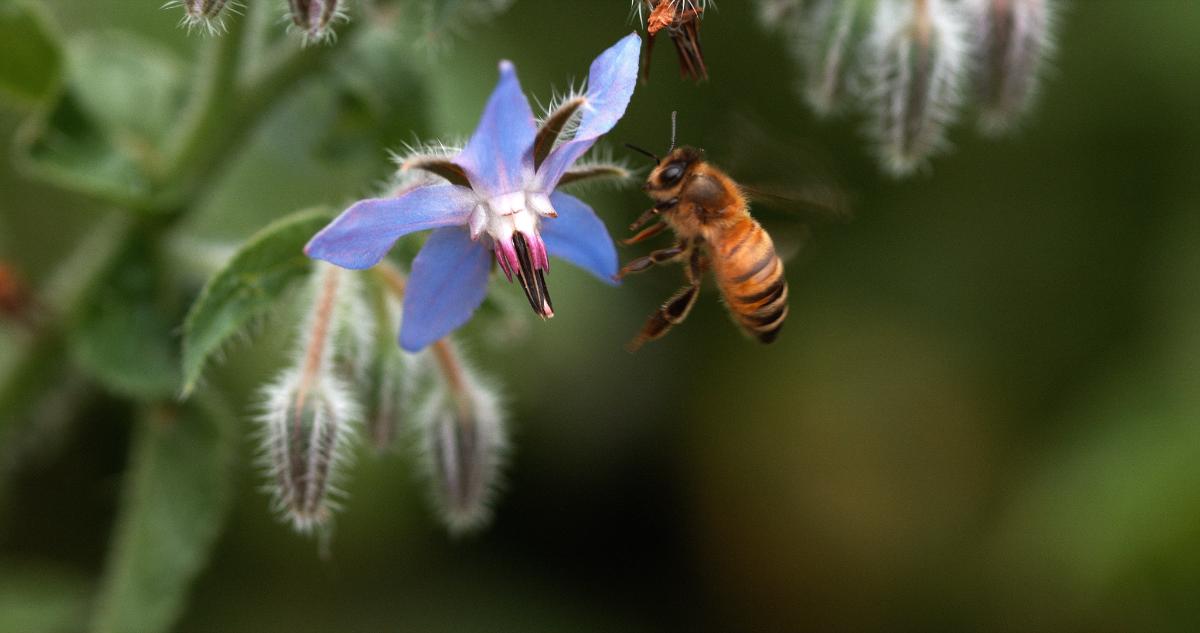
| Plant Name: | Borage |
| Size: | 2’ to 3’ |
| Light: | Full to partial light |
| Zone: | 3 to 10 |
| Benefits: | Attracts pollinators and beneficial insects |
This pollinator-friendly plant with sky-blue flowers attracts honeybees and bumblebees to your strawberries, along with a wider range of pollinators.
The hoverfly, also known as the syrphid fly or flower fly, is one pollinator that loves borage. Hoverflies are flies that mimic bees, and they’re a beneficial insect that’s great to have in the garden. Hoverfly larvae eat aphids along with other pests like scales, mites, and thrips.
Chives
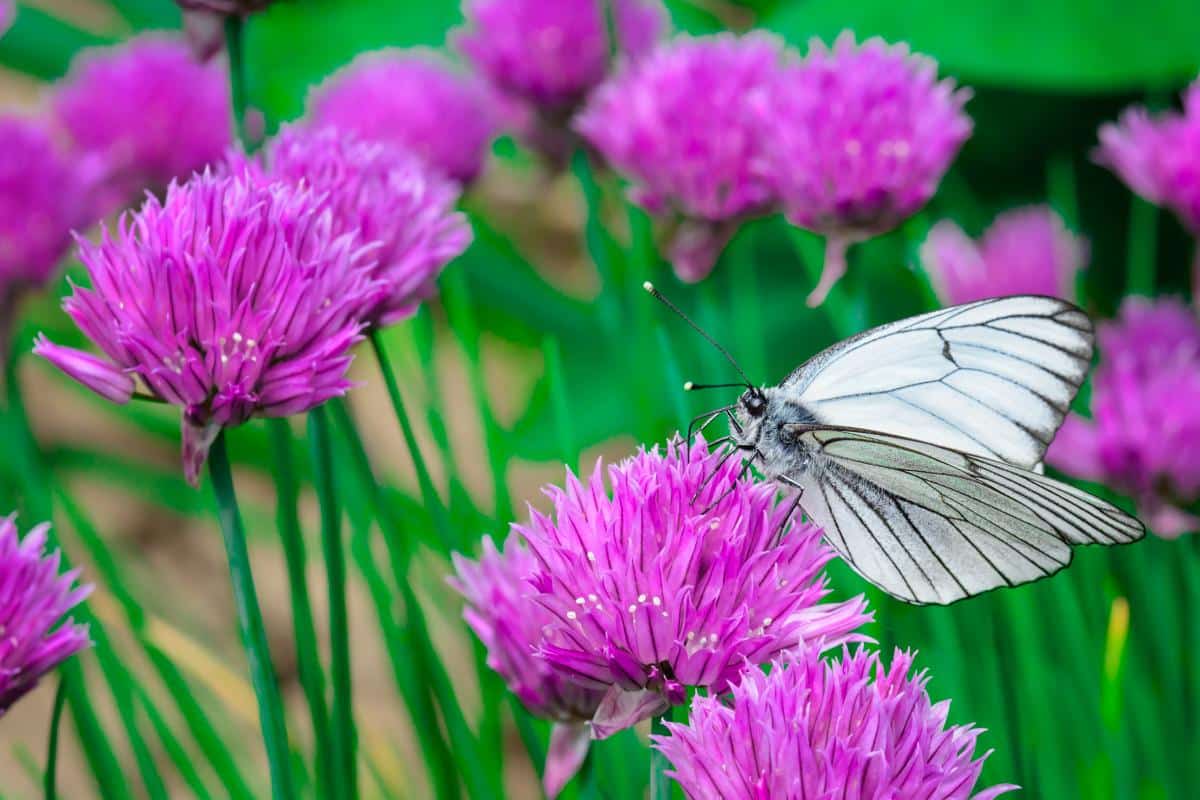
| Plant Name: | Chives |
| Light: | Full sun |
| Zone: | 3-9 |
| Benefits: | Repels pest insects |
Warning: Chives will spread by seeds and by bulbs, so grow chives in a pot so you can keep them contained. Their strong smell will help keep pests at bay, just as the garlic and onions do.
The 4 Worst Companion Plants for Strawberries!
Not all plants make good companions. Here are four vegetable plants that should not be set near the strawberry patch.
Brassicas/Cole Crops
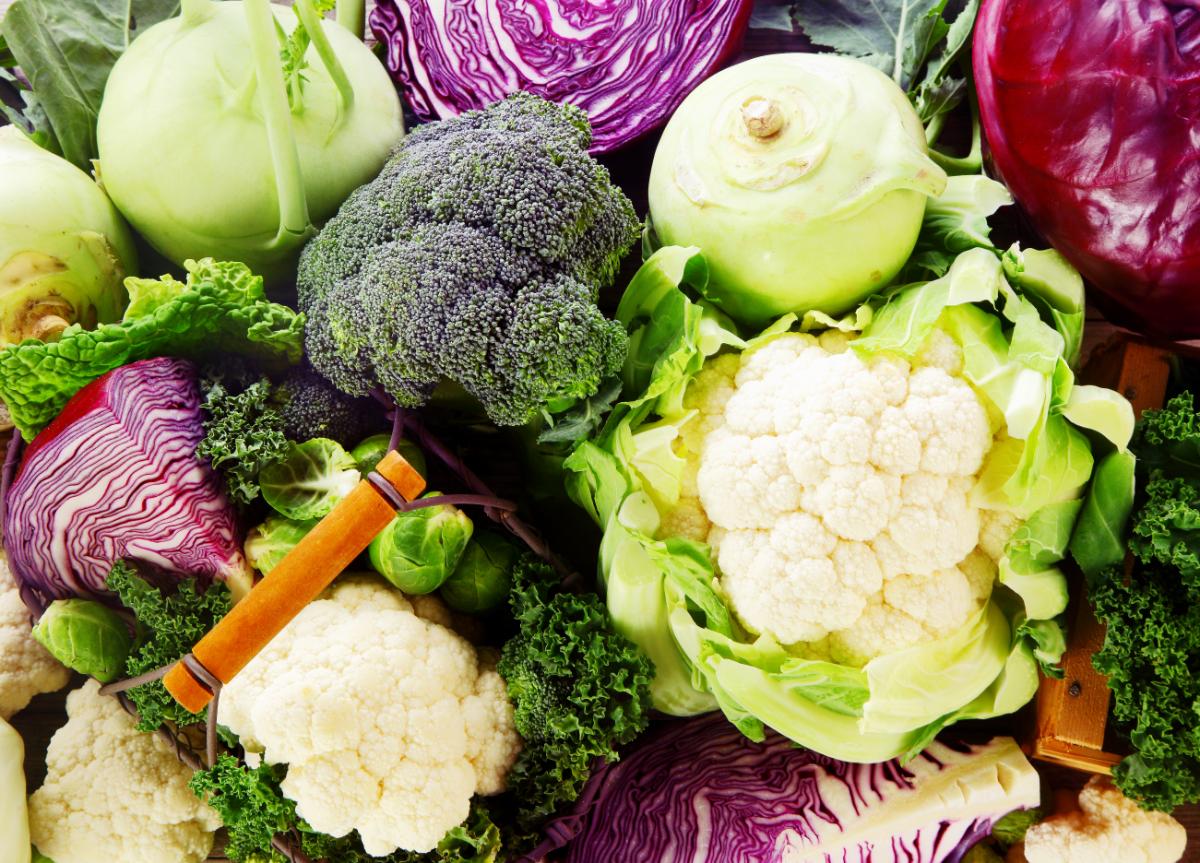
| Plant Name: | Brassicas/Cole Crops |
| Light: | Full light |
| Detriment: | Slug/snail magnet; nutrient robber |
Cruciferous vegetables are members of the wide-ranging mustard family. They include cabbage, broccoli, cauliflower, kohlrabi, collard greens, radish, Brussels sprouts, bok choi, kale, mustard, turnips etc., etc.
These plants steal nutrients from your strawberries, causing them to bear smaller fruit. They also invite slugs and snails, which then head over to eat strawberries and lay eggs.
Brassicas aren’t like this to all plants. There are many other plants that work well with them: 18 Best Companion Plants for Your Brassica Vegetables.
Tomatoes
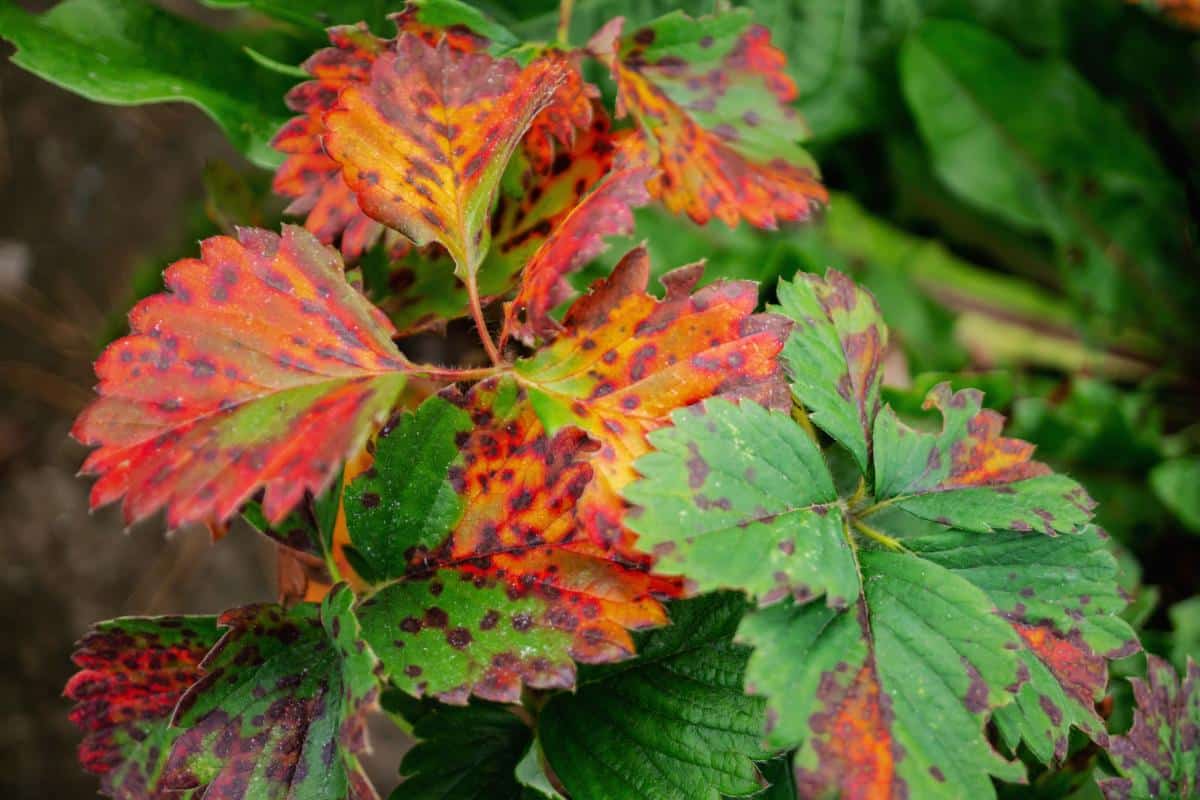
| Plant Name: | Tomatoes |
| Light: | Full sun |
| Zone: | 3-9 |
| Detriment: | Shares fungal diseases |
Tomato plants tend to get bigger than you expect, and they will crawl all over your strawberries if you let them. Tomato plants are bad companion plants because they can also pass verticillium wilt to your strawberries – a fungal disease that makes both tomato and strawberry plants shrivel up and die.
Tomatoes do make good companion plants for other garden crops. Read about them here: 15 Best Companion Plants for Tomatoes
Melons

| Plant Name: | Melons |
| Light: | Full sun |
| Zone: | 3-9 |
| Detriment: | No sense of boundaries; insect magnet |
Melons are the ultimate space hogs. They will send hundreds of vines all over your strawberry patch if you let them. They also attract insect pests that might migrate into your strawberries and can pass diseases to your plants.
Potatoes
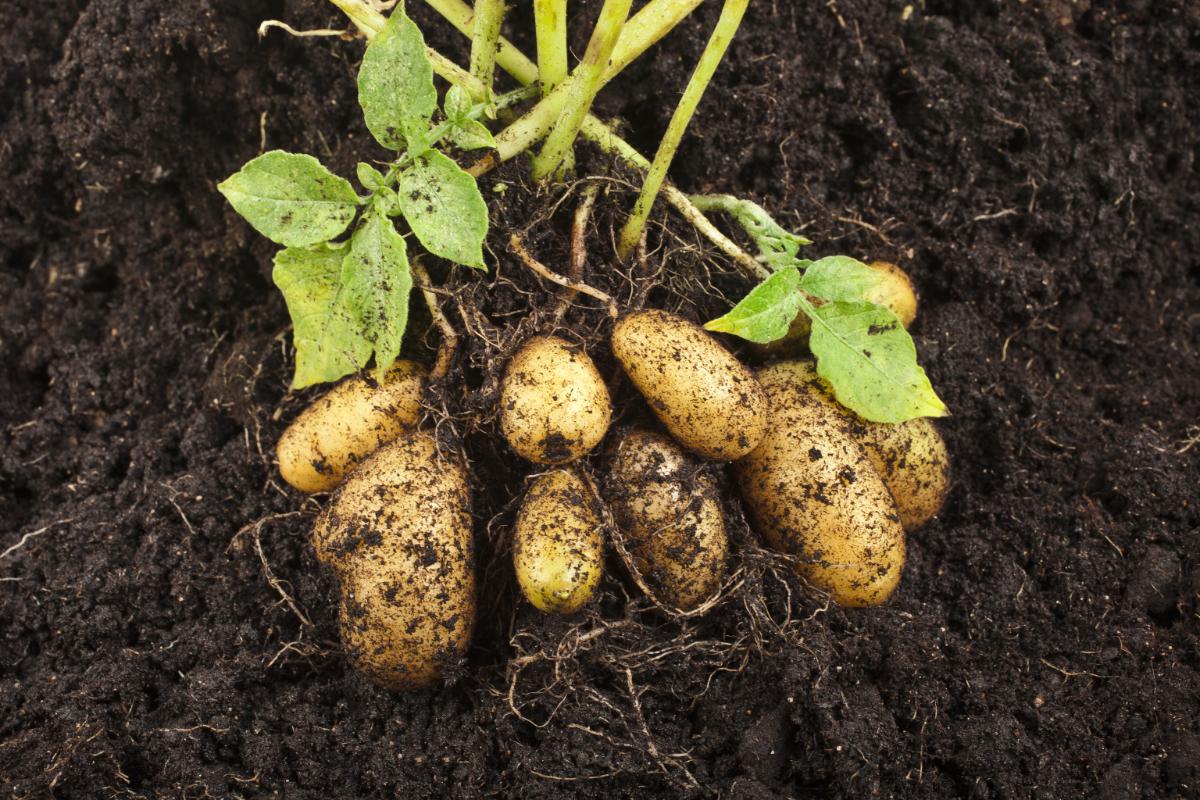
| Plant Name: | Potatoes |
| Light: | Full sun |
| Detriment: | Soil hog; disease spreader |
Not only are potato hills and underground tubers disruptive to your strawberry patch, but this member of the Nightshade family can also spread diseases to your strawberry plants.
Important Notes
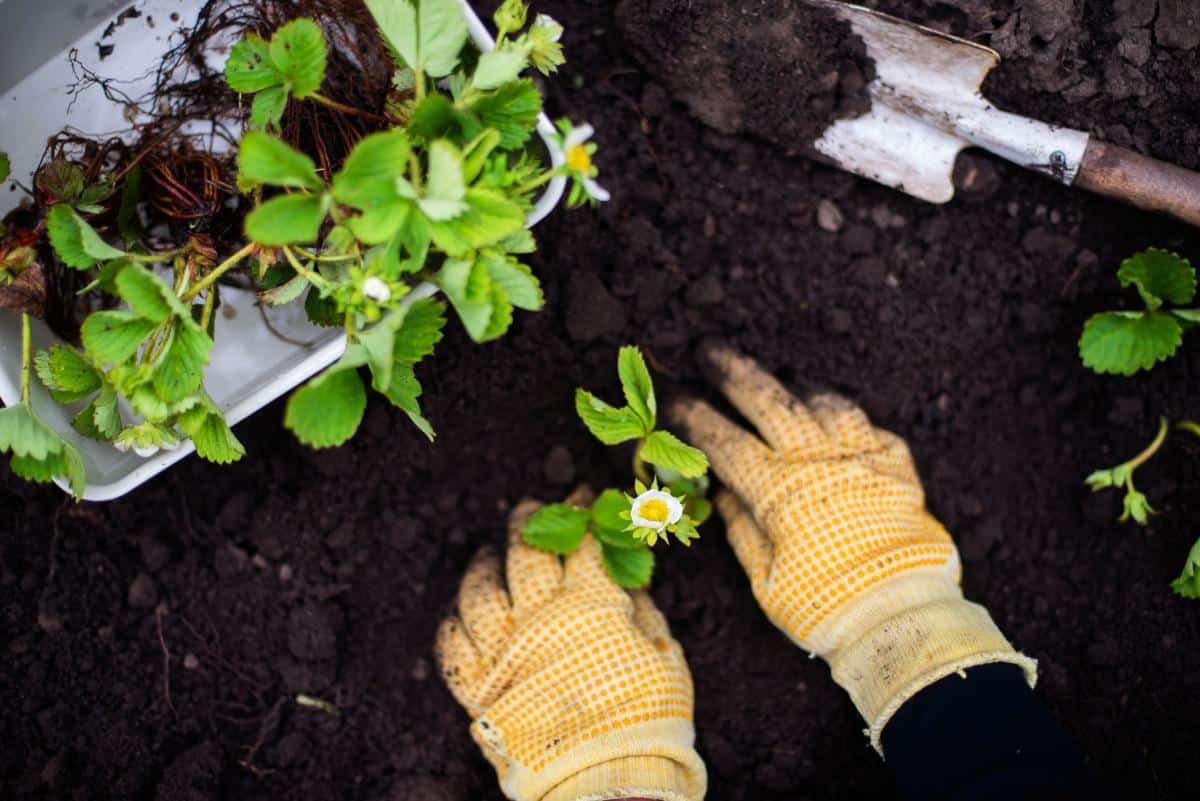
- Do not plant strawberries in the soil where you’ve grown members of the nightshade family (i.e., tomatoes, potatoes, peppers, eggplants, okra).
- Also, avoid places where you’ve grown mint plants, chrysanthemums, or roses in the past five years. The roots of these plants can leave diseases like verticillium wilt in the soil, which turns strawberry plants brown and kills them.
- When buying strawberry starts, choose disease-free plants that are resistant to Verticillium fungus. According to the Ohio State University Extension, resistant strawberry varieties include Allstar, Catskill, Delite, Earliglow, Guardian, Lester, Rechief, Scott, Sunrise, Surecrop, and Tennessee Beauty. Everbearing varieties include Tribute and Tristar.
Conclusion
Strawberries (and other plants) benefit from companion planting through improved pollination and better disease and pest resistance.
But it’s not just the plants that benefit: beneficial insects have food and places to hide. We, in turn, don’t have to do as much work in the garden because natural processes take care of the rest.
And companion planting is beautiful in general, as flowers are added to brighten everything. You can’t lose!
Learn more about companion planting: 21 Best Companion Plants for Roses

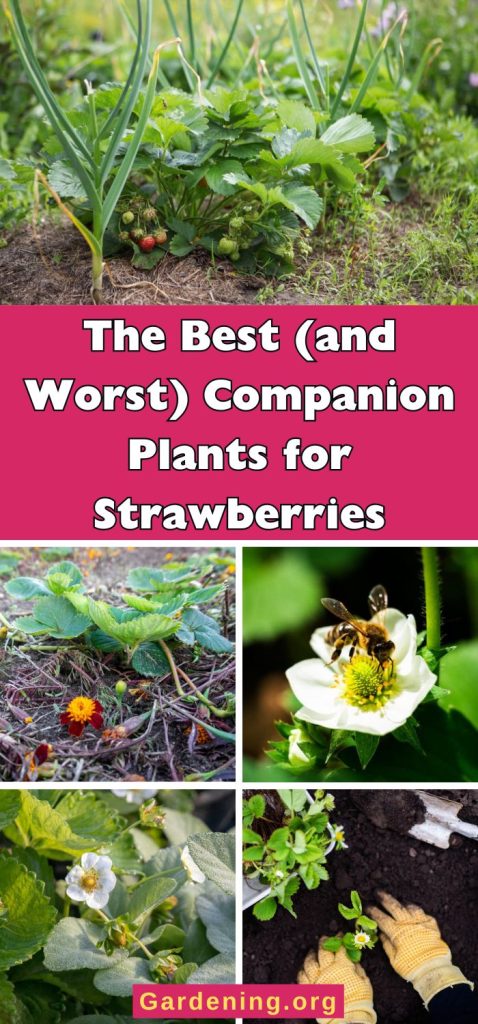
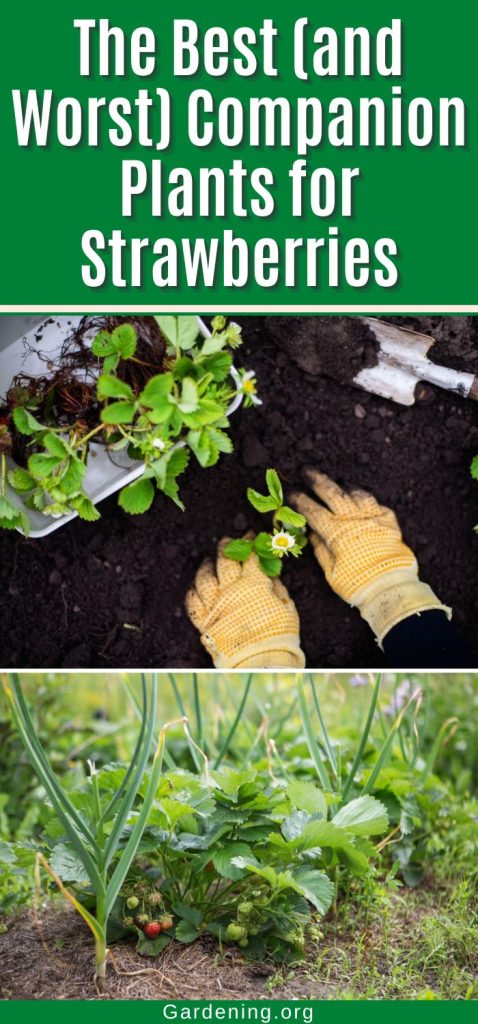
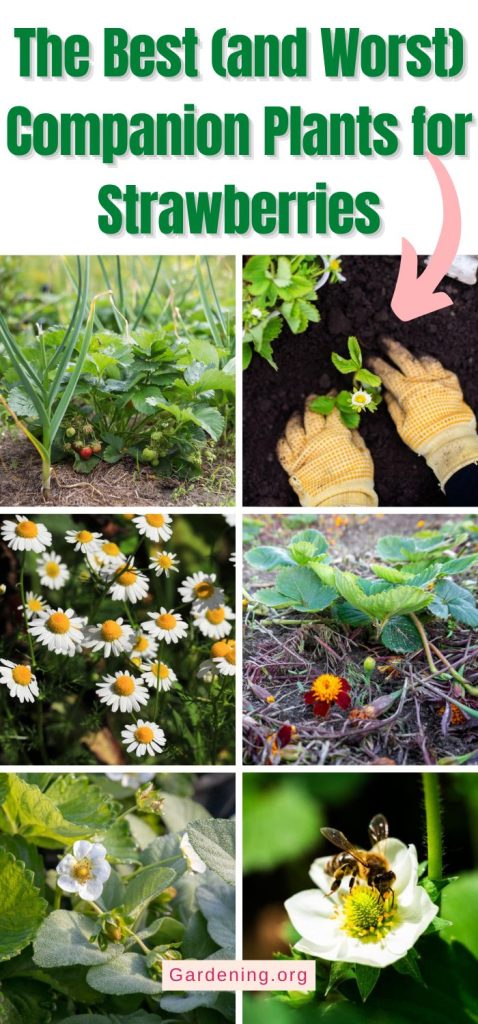
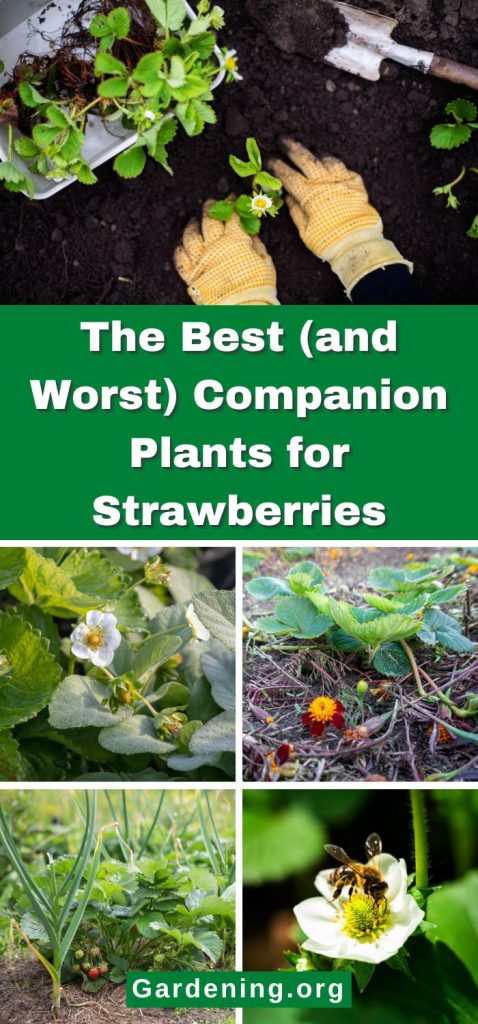
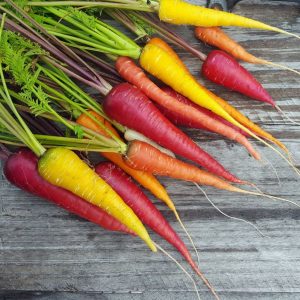
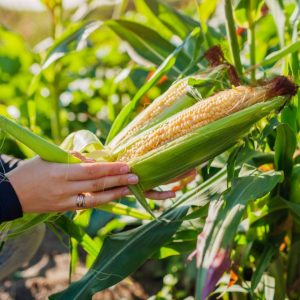
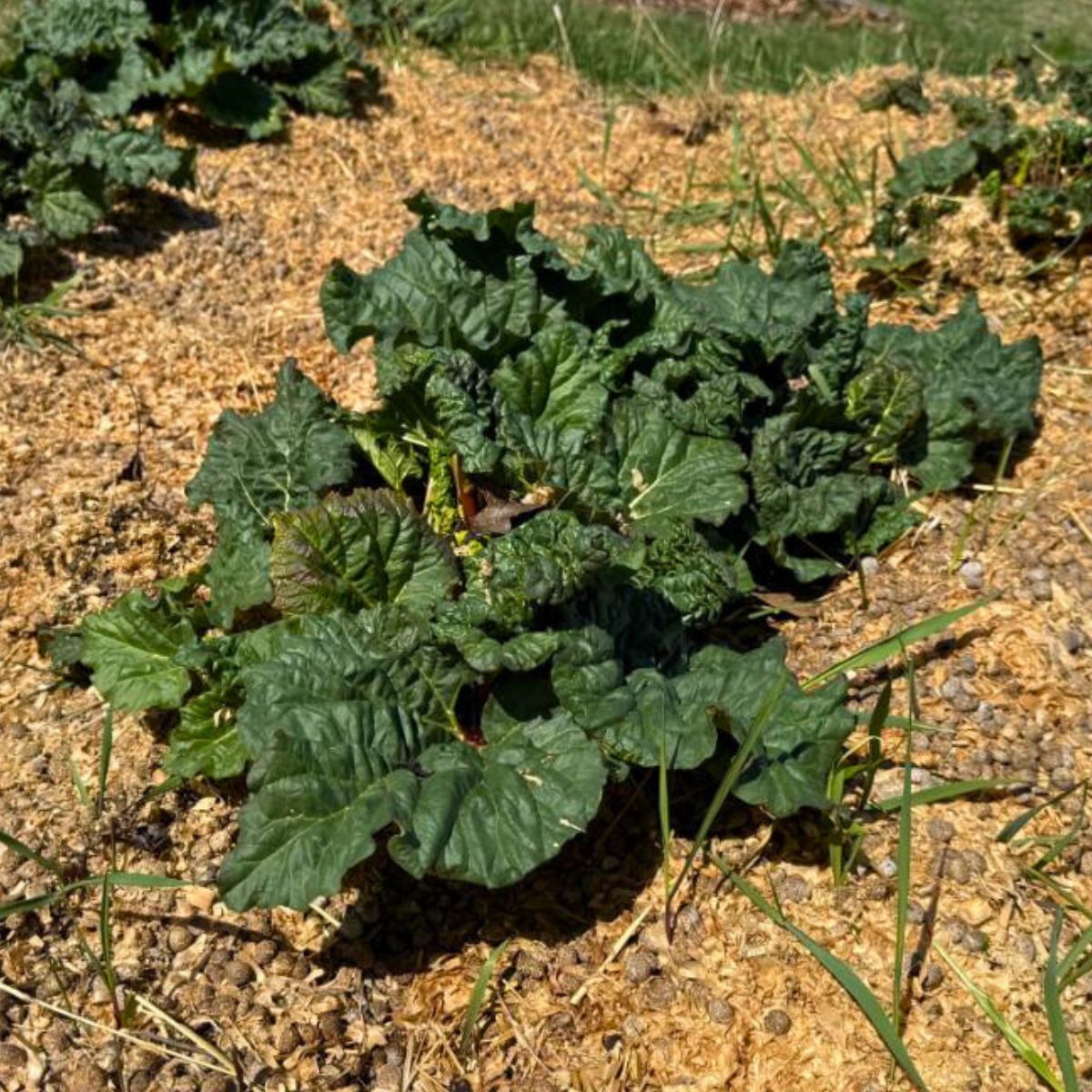
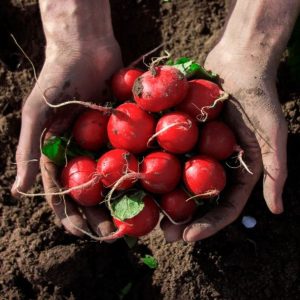
Leave a Reply